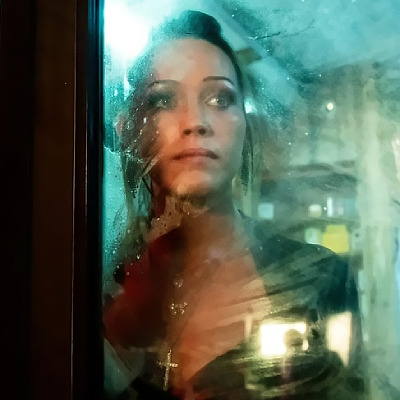#icons irma eckler
Text



























like if you save or @captiveprnce.
#victoria pedretti icons#icons victoria pedretti#icons#icons without psd#victoria pedretti#promotional photos#stills#origin#fall risk#an enemy of the people#screencaps#low quality icons#icons low quality#low quality#lq icons#icons lq#lq#irma eckler icons#icons irma eckler#dylan icons#icons dylan#origin icons#icons origin#icons fall risk#fall risk icons
59 notes
·
View notes
Text

I saw this picture a while back, and I had made a note to myself, to find out more about this picture, about this man, which made this photograph such an iconic photo. As it so happens, the photo was taken in June of 1936, so this would be a good time to tell this story.
First, some background: The photograph was taken on June 13, to be exact. Adolf Hitler was speaking at a rally at a shipyard, and, as such, during that time, anytime Hitler spoke, according to Nazi Germany law, each citizen there had to stand and salute "Der Führer". If you did not salute, you could be punished. Some people, whose religions conflicted with the law, would be arrested and their children attending school were expelled, detained, and separated from their families.
In the picture, however, you can clearly see amidst the sea of "Heil Hitler's!", one man stood resolute, alone in his defiance.
Now, many times when I research a story, information leads me to different directions. This is one such story. You see, there seems to be some dispute as to who the man in the picture is - one woman claimed it was her father, August Landmesser, and she would write a book about it. Another person claimed it was his father, Wegert Gustav, and his son would provide proof that his father did work at the shipyard and objected to Nazism on grounds of his Christian faith.
Both stories are compelling. But, since I've been accused of writing too long for this format, Wegert Gustav's story will have to wait for another time. For this story, I will focus on August Landmesser, who many other publications have identified as the man in the picture.
I've chosen to tell Landmesser's story because of its relevance today. Landmesser started out as a loyal Nazi, who joined the Nazi party in 1931, a mistake he would regret for the rest of his life. After joining the Nazi party, Landmesser would fall in love - with a Jewish woman named Irma Eckler. He would soon discover what the Nazi party was all about and he and his family would get caught up in its deadly race laws.
After the Nazi party found out Landmesser was engaged to a Jewish woman, he would be expelled from the party. But, it didn't end there.
When Landmesser and Eckler tried to file a marriage application in Hamburg, the union would be denied under the newly enacted Nuremberg Laws. In 1935, the couple, amidst all the turmoil, would welcome their first daughter, Ingrid.
By this time, Landmesser was well informed about the Nazi party, and, so supposedly, on June 13, 1936, when given an opportunity to express his thoughts about Hitler and the Nazi party and what it was doing to his homeland, he decided to give his crossed-arm stance during Hitler's speech at the shipyard, to be captured forever in the iconic photograph, according to his daughter.
In 1937, Landmesser decided Nazi Germany was no place to raise his family, he felt unsafe, and all the stories of violence against anyone who disagreed with "Der Führer" frightened him. He decided to flee to Denmark with his family, but, he would be detained at the border. He would be accused of "dishonoring the race," or "racial infamy," under the Nuremberg Laws.
But, he would refuse to abandon his wife and child, ignoring Nazi wishes to end their relationship. He would be arrested, sent to a Nazi concentration camp to serve three years.
He would never again see the woman he loved nor see his daughter(s) (his wife at the time was pregnant with a second child) grow up.
His wife would be arrested by the secret state police, giving birth to the couple's second child, Irene, in prison. Afterwards, she would be sent to an all-women's concentration camp, then supposedly transferred in 1942 to what the Nazi's called a "euthanasia center" where she was murdered with 14,000 others.
Landmesser, lost without his wife and children, would be released only to be drafted into war in 1944, where he would be declared missing in action in Croatia and presumed dead.
The children of the couple would survive.
The photo of that moment in 1936 would lay unnoticed for nearly 55 years, until 1991, when a German newspaper republished the photograph, asking its readers whether anyone could identify the lone man in the picture.
During that time, one of the couple's daughters, Irene Eckler, had been researching her family, trying to gain an understanding of what happened to them. She and her sister had been separated, but had survived the war without their parents. She had found some information at Fasena, an educational site on the Nazi death camp at Auschwitz. She then saw the newspaper article and identified the photograph.
She would then publish her findings in a book titled, "Irene Eckler: A Family Torn Apart by Rassenschande (race disgrace)".
The picture would re-surface again after it was published by the Washington Post after the Japanese earthquake and tsunami, going viral online.
There is still some uncertainty whether the man in the picture is August Landmesser (that may be another story in the future), but there is no uncertainty as to what happened to Landmesser, what happened to many others during that time.
As long as I am able, I will continue to share these stories, to share awareness, to share some understanding, to ensure families, are no longer separated.
The Jon S. Randal Peace Page
60 notes
·
View notes